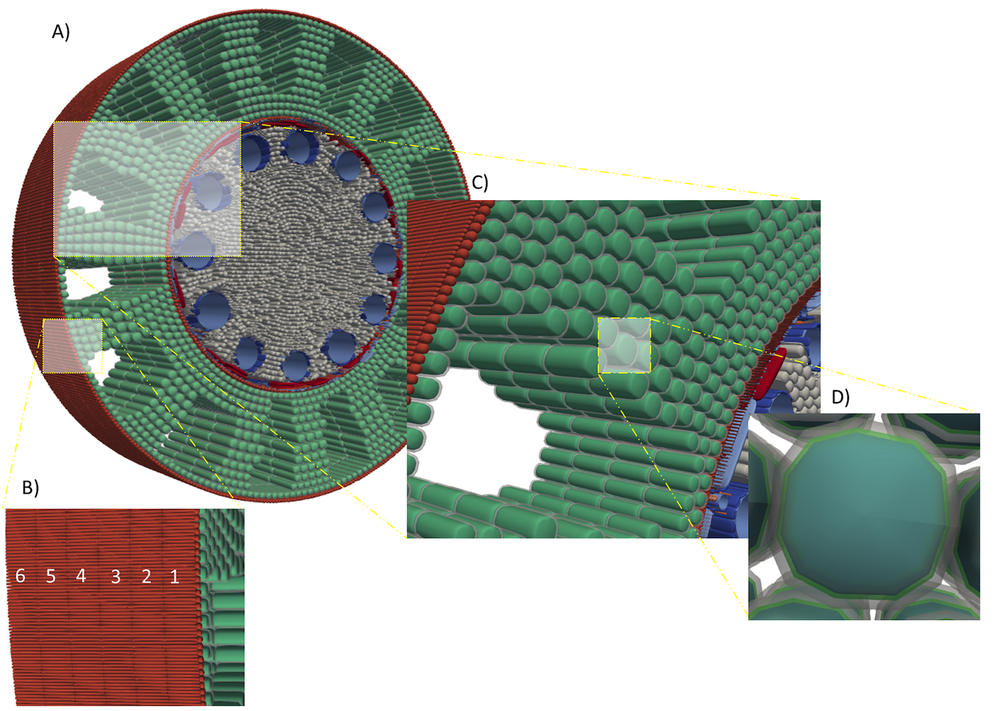
RootSlice functional structuring modeling
Authors
Sidhu, JS, I Ajmera, S Arya, JP Lynch
Source
Plant, Cell, & Environment 46:1671-1690, January 28 2023, https://doi.org/10.1111/pce.14552
BioRxiv June 29 2022 10.1101/2022.06.29.498145
Download Options
Abstract
Root anatomy is an important determinant of root metabolic costs, soil exploration, and soil resource capture. Root anatomy varies substantially within and among plant species. RootSlice is a multicellular functional-structural model of root anatomy developed to facilitate the analysis and understanding of root anatomical phenotypes. RootSlice can capture phenotypically accurate root anatomy in three dimensions of different root classes and developmental zones, of both monocotyledonous and dicotyledonous species. Several case studies are presented illustrating the capabilities of the model. For maize nodal roots, the model illustrated the role of vacuole expansion in cell elongation; and confirmed the individual and synergistic role of increasing root cortical aerenchyma and reducing the number of cortical cell files in reducing root metabolic costs. Integration of RootSlice for different root zones as the temporal properties of the nodal roots in the whole-plant and soil model OpenSimRoot/maize enabled the multiscale evaluation of root anatomical phenotypes, highlighting the role of aerenchyma formation in enhancing the utility of cortical cell files for improving plant performance over varying soil nitrogen supply. Such integrative in silico approaches present avenues for exploring the fitness landscape of root anatomical phenotypes.

